You don’t buy into empty promises. Neither do you let your guard down with flowery words. You’ve felt the prickle of unease as the world turns unpredictable, and like many, you’re done with the blind optimism that leaves so many vulnerable.
But you? You’re different. While others bury their heads in the sand, you take action. Because you know the bedrock of survival isn’t hope, it’s preparedness. Real, tangible, no-nonsense readiness for the “what ifs” that others dismiss.
You’re not looking for feel-good fluff. You need straight-shooting, actionable guidance, and that’s exactly what we’re here to offer. Together, we’ll arm ourselves with not just the tools but the mindset needed to stand tall in the face of adversity.
In a world that’s increasingly unpredictable, join us in being the undeniable certainty. Let’s do this. No hype. Just solid, unwavering preparedness.

What Is Prepping And Why Is It Important?
Prepping — or more accurately preparedness — is about being ready to handle crises, emergencies, or disasters. It’s all about planning, training, and equipping yourself with what you need to tackle unexpected situations effectively.
Why is it so important, you ask? Well, preparedness can quite literally be a lifesaver. It can lessen the impact of disasters, speed up recovery times, and, in many cases, prevent harmful situations from escalating.
Being prepared also gives you a measure of control in uncertain times. It helps ease your anxiety because you know you’re as ready as you can be for whatever comes your way.
And it’s not just about having a plan but also about having the courage to face the unknown and adapt on the fly.
In a world full of unpredictability, preparedness is our defense mechanism. It’s like carrying an umbrella even when the sky is clear. It may not stop the storm, but it will definitely keep us dry.
So let’s work on our preparedness game today, for a safer and more secure tomorrow.
Historical Perspective
Instances from History That Highlight the Importance of Preparedness
Let’s step into the time machine for a bit, shall we? The history of our world is etched with incidents that have shown us, time and again, how crucial preparedness is.
79 AD: The bustling Roman city of Pompeii
Without a proper understanding of Mount Vesuvius’ volcanic nature, or an evacuation plan in place, the city was decimated within 24 hours of the mountain’s catastrophic eruption.
Over 2000 lives were lost, and an entire city was wiped out, because they weren’t prepared.

1918: The Spanish Flu Pandemic Sweeps Across the Globe
Its deadly grip claiming the lives of tens of millions. Hospitals were overwhelmed, economies crumbled, and communities fractured.
The world was caught off-guard without effective containment measures, medical infrastructures, or health protocols.
1940: World War II, The Blitz of London
Here, London had a plan. Air-raid shelters were built, children were evacuated to the countryside, and citizens were trained in firefighting and first aid.
The city was battered, yes, but it stood strong, demonstrating that a well-prepared community can weather even the harshest of storms.
2004: The Catastrophic Indian Ocean Tsunami
Many of the regions affected lacked early warning systems or disaster response plans. The tsunami claimed nearly 230,000 to 280,000 lives, becoming one of the deadliest natural disasters in recorded history.
The aftermath exposed glaring gaps in coastal preparedness and sparked a global conversation about the necessity of early warning systems.

2020:COVID-19 Pandemic
And who can forget the year the world stood still in the face of the COVID-19 pandemic? This invisible enemy caught nations off guard, exposed weaknesses in health infrastructures, and redefined our understanding of “normal.”
It was a wake-up call for preparedness on a personal, community, and global level, extending beyond physical health into domains like mental well-being and financial stability.
So what’s the lesson in all these historical vignettes? It’s this: preparedness is not just an option; it’s a lifeline.
The difference between Pompeii and London wasn’t just a matter of technological advancements or times; it was about the recognition of potential threats and the implementation of plans to counter them.
Surviving a disaster isn’t merely a game of chance. History has proven that time and again. Instead, it’s about arming yourself with knowledge, gearing up with the right tools, and being mentally and emotionally fortified to tackle whatever life decides to throw your way.
As we dive deeper into the facets of preparedness, remember this: the past, with all its triumphs and tragedies, is our guide.
It offers lessons, stark reminders of what can happen when we’re caught off guard, and powerful stories of resilience when we’re ready.

Evolution of Preparedness Over Time
Having taken a trip through the pages of history, it’s now time to observe the gears of time in action.
Centuries ago, humanity was at the whim of nature, equipped with nothing more than gut instincts and traditional wisdom to foresee calamities. You can imagine how well that went down, right? But hey, that’s where we started.
Then, communities began recognizing patterns. They noticed that floods often followed torrential rains or that certain stars appearing in the sky signaled the beginning of hurricane seasons. The result? They developed rudimentary warning systems and began modifying their habitats and lifestyles according to these patterns.
Come the Industrial Revolution, and with it, technological leaps. Suddenly, we had seismographs to detect earthquakes, barometers to predict storms, and telegraphs to disseminate information quickly. Preparedness became a bit more systematic, a bit more scientific.
The 20th century kicked it up another notch. Governments started establishing dedicated disaster management agencies.
Civil defense drills became a common practice, especially during the World Wars and the Cold War era. We saw the rise of comprehensive disaster management plans, contingency strategies, and large-scale drills.
But hold on, we weren’t done yet. The advent of the internet and advanced technology brought an avalanche of change.
Satellite imagery for weather forecasting, online platforms for real-time information dissemination, advanced simulation models for risk assessments, and hey, even apps for personal preparedness — we’d come a long way from interpreting star patterns!
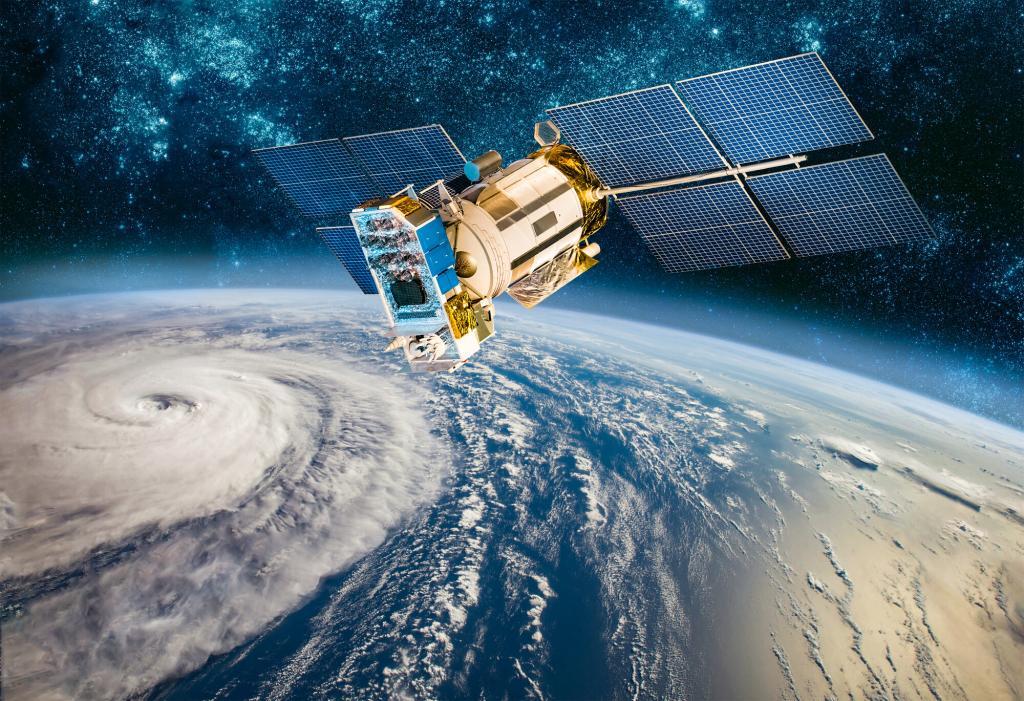
And today, in the 21st century, we’re refining and expanding our understanding of preparedness like never before. It’s not just about physical readiness anymore.
We’re talking about mental health resilience, financial stability, digital security, and sustainable living.
The evolution of preparedness has been a fascinating journey, shaped by technological advancements, societal changes, and lessons from past disasters.
But here’s the kicker: it’s an ongoing journey. The wheel’s still turning. As our world continues to change, the challenges we face will too. And as they do, so must our preparedness strategies.
Different Aspects Of Preparedness
Personal Preparedness
Let’s face it, in the game of life, being prepared isn’t just about owning a survival kit or knowing the nearest exit routes. Nope. It’s about being ready, head to toe, inside out.
And where does it all begin? With you. Personal preparedness.
Health and Medical Preparedness
We’ve all heard the age-old saying, “Health is wealth,” right? And when disaster strikes, this old adage shines bright as day.
No amount of gear or resources can make up for a body and mind that’s not prepared. That’s why it’s essential to maintain regular check ups and keep a tab on your vitals.
Also, a basic understanding of first aid and CPR? It can be a game-changer in an emergency situation.
Plus, let’s not forget the importance of regular exercise and a balanced diet to keep you fit and ready to face any challenges.

Mental and Emotional Preparedness
When the world’s going belly-up, it’s not just physical strength that’ll pull you through.
Your mental fortitude will play a significant role. This can include learning stress management techniques, practicing mindfulness, or even seeking professional help to address anxieties or phobias related to certain scenarios.
After all, the strongest fort is the one where the walls and the people inside are both ready for the storm, right?
Financial Preparedness
Now, let’s talk dough. Disasters, big or small, can wreak havoc on your finances if you’re not prepared.
Job loss, property damage, medical bills — they can add up to a pretty penny. That’s where financial preparedness comes in.
It’s about creating and maintaining an emergency fund, having adequate insurance coverage, and managing your debts effectively.
It’s not about having a treasure chest but about ensuring you won’t go bankrupt when life decides to play hardball.
Preparedness boils down to a resilient mind, a healthy body, and financial security. Yet, it’s a personal journey, unique to your circumstances.
Your readiness could mean physical fitness, a solid savings account, or a calm mind amidst chaos. It’s about identifying what readiness means for you and building a unique resilience step by step. This isn’t a destination, but a journey towards a more prepared you.
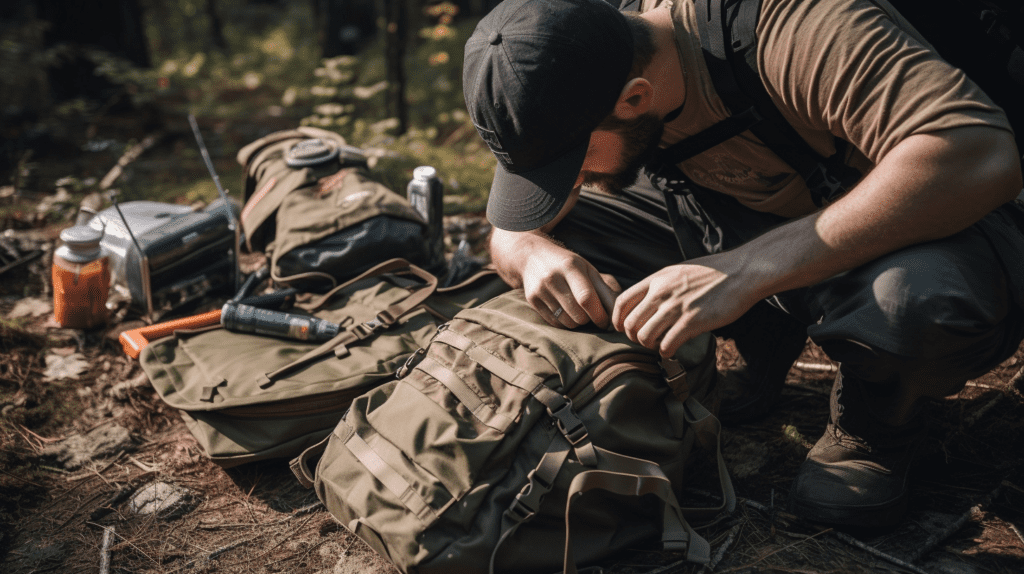
Household Preparedness
It’s only fair that we get your nest ready too, right? Let’s get into household preparedness.
Home Safety and Security
Keeping your home safe and secure is about more than just strong doors and good locks (though they’re important too!).
We’re talking about fire safety — smoke detectors, fire extinguishers, clear exit paths. It’s about maintaining your home, checking for any potential risks like faulty wiring or gas leaks.
Also, don’t forget about safety from intruders or during civil unrest. A well-prepared home is a fortress, ready to protect you from threats inside and out.
Next up is sustenance, the vital fuel that keeps you going: nourishment and hydration.
What if the local supermarkets are closed or the water supply is interrupted? What then? Maintaining a stockpile of non-perishable food and drinkable water can be your saving grace. Consider rain water storage or planting a survival garden.
Be sure to rotate your supplies to ensure freshness. And remember, it’s not just about accumulating a large quantity, but also ensuring a varied and nutritious selection.

Power and Utility Management
What happens if the power goes out or if there’s a gas shortage? That’s where power and utility management comes in.
Consider alternate power sources like generators or solar panels. Learn how to safely shut off your utilities if needed. And hey, a few candles, flashlights and matchsticks tucked away won’t hurt, either!
Emergency Kits and Supplies
Last but not least, have emergency kits and supplies on hand.
A first aid kit, medications, important documents, some cash, clothes, and basic tools are the essentials that’ll help you tide over until help arrives or you’re able to establish a semblance of normalcy.
But here’s the thing: a well-prepared home isn’t just about the stuff, it’s about the people in it.
Make sure everyone in your home knows what to do in an emergency. Practice your escape plans, teach your kids how to dial emergency numbers, discuss where you’d meet if you get separated.
Community Preparedness
DISCLAIMER: It’s important to discuss community preparedness in the broader context of prepping because it’s relevant, and because we value human life. However, prepper basics apply: Be wary about sharing intel about your preps with others. Because when disaster strikes, you don’t want a horde of people showing up at your door.
Now we’ve got ourselves prepared, we’ve got our homes ready, but what about the community we live in? For instance, the people next door, across the street, around the block.
Because here’s the thing: in a crisis, we’re stronger together. So, let’s delve into community preparedness.
Preparedness isn’t a solo mission. In times of crisis, communities often stand together, and become each other’s support systems. So, let’s explore how you can involve your community in preparedness plans.
Start by understanding your community. What are the local risks? What resources are available? What is the community’s emergency response plan?
Community Emergency Plans
Your community’s emergency plans could be city-wide evacuation routes, designated shelters, emergency communication systems, or local emergency contacts.
Knowing these details can make a world of difference when disaster strikes. It’s not just about having a roadmap to safety, but also about knowing where you fit into the bigger picture.
Neighborhood Watch Programs
Then we have neighborhood watch programs. But we’re not just talking about crime here.
It’s about neighbors looking out for each other, recognizing potential risks and threats, and alerting each other and the authorities. A little vigilance can go a long way in keeping your community safe.

Community Support Networks
And finally, building community support networks, which is about people coming together, pooling resources, sharing skills, helping each other.
It’s about the retired nurse on your street offering first aid training, the local school serving as a temporary shelter, or the community center organizing food drives.
It’s also about realizing that together, you’re more resilient, more resourceful, and more prepared.
Remember, “it takes a village” isn’t just a saying. It’s a time-tested truth, especially when it comes to preparedness.
By involving your community in preparedness plans, you’re not just securing your household… you’re helping to safeguard your entire “village.”
Community preparedness means you’re not alone. It means when the power goes out, you can team up with your neighbors to pool generators. Or, when a hurricane warning is issued, you can help each other secure homes.
It’s about transforming a group of individuals into a community of helpers, supporters, and survivors. But how do you make it happen? Well, it starts with a conversation.
Talk to your neighbors, participate in local meetings, and engage with community organizations. Share your knowledge and learn from others. Offer help, seek support.
Disaster Preparedness
Now what about the big, scary “what ifs” that keep us up at night?
Natural disasters, technological mishaps, pandemics, or even acts of terror — let’s talk about disaster preparedness.
Natural Disasters
Whether it’s hurricanes, wildfires, floods, earthquakes, or tornadoes, Mother Nature sure knows how to throw a curveball.
Preparing for natural disasters involves knowing your risks, being aware of warning signs and systems, understanding evacuation routes and shelters, and having a disaster-specific plan and kit.
It’s about being as ready as you can be for a force that’s beyond human control.
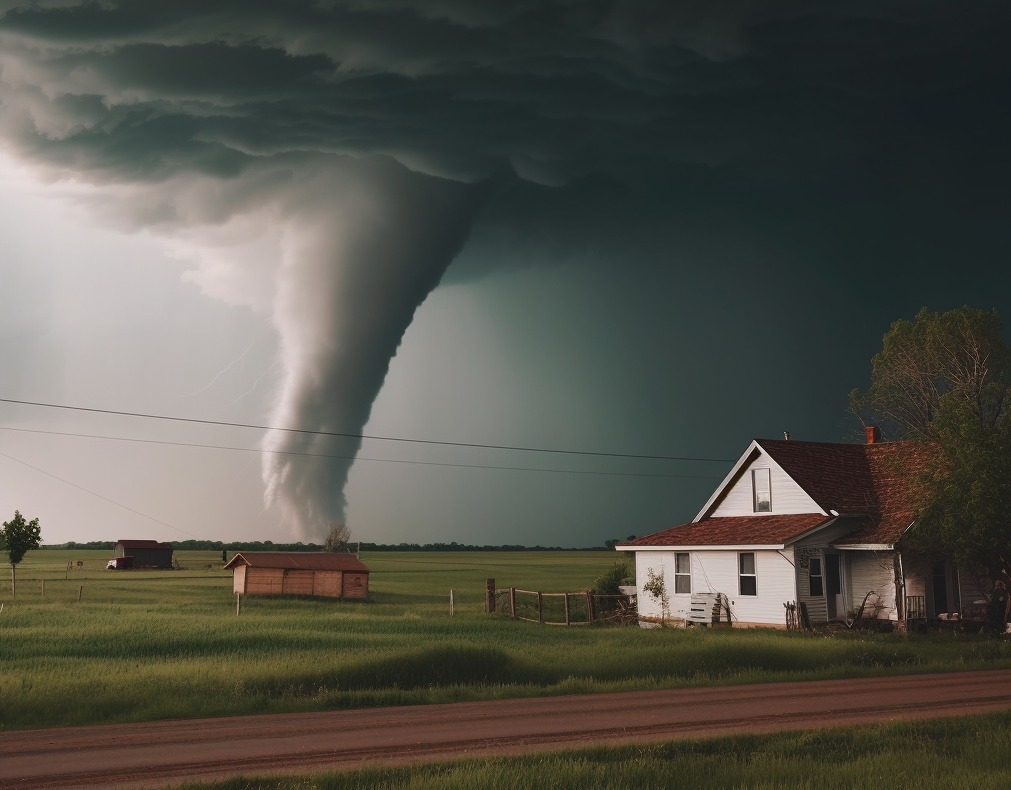
Technological and Accidental Hazards
Nature isn’t the only potential threat. Technological or accidental hazards like power outages, chemical spills, nuclear accidents, or even something as common as a house fire — they all require their own level of preparedness.
Understanding these risks and knowing how to react could mean the difference between panic and safety.
Pandemic Preparedness
Then comes the menace that we’ve become all too familiar with: pandemic. The last few years have shown us how a tiny virus can upend the world.
Pandemic preparedness is about more than just masks and hand sanitizers.
It’s about health hygiene, immunizations, communication plans, remote work and learning setups, mental health resources, and so much more.
Terrorist Hazards
And finally, a threat that’s as unsettling as it is real: terrorism.
Preparing for such events involves staying informed about the threat levels, understanding how to react during an attack, knowing the steps to take after such an event, and ensuring you’re mentally and emotionally equipped to handle such a crisis.
Disaster preparedness, in essence, is about understanding the unique challenges each disaster presents and gearing up accordingly.
It’s not just about surviving the disaster itself, but also managing its aftermath — the disruptions, the losses, the trauma.
Remember, disaster preparedness isn’t about living in fear. It’s about living with awareness and readiness. It’s about realizing that while we can’t control these events, we can control how we respond to them.
Digital Preparedness
Digital preparedness involves fortifying your online presence, safeguarding your digital assets, and arming yourself with the knowledge and skills to navigate the internet securely.
Cybersecurity
This is the foundation of digital preparedness. Implementing robust passwords, enabling multi-factor authentication, and regularly updating software are just a few ways to secure your digital fortress.
It’s akin to installing a high-tech alarm system for your online persona, protecting your data from prying eyes.
Digital Asset Management
We’re talking about anything that exists in a binary format and comes with the right to use. Photos, emails, social media accounts, digital currencies, online banking — these are all part of your digital estate.
Preparing involves identifying these assets, protecting them, and determining how they should be handled in case something happens to you. Think of it as creating a will for your digital life.
Social Media and Online Presence
In today’s connected world, your online persona can be just as important as your real-world identity.
Managing this aspect of digital preparedness can include setting privacy settings, controlling what information you share, and being cautious about online interactions.
It’s about defining your digital footprint, leaving a mark that’s uniquely you.
Navigating the digital world can feel like traversing a vast, unpredictable ocean. Threats could come from anywhere, morphing, adapting, catching you unawares.
But with proper digital preparedness, you can set sail confidently, steering clear of dangers, riding the waves of the digital revolution.
Your online persona, digital assets, and cyber sanctuary are worth safeguarding. Because in our interconnected world, being digitally prepared is not just a luxury, it’s a necessity.

Preparedness for Different Groups
Families with Children
Okay, let’s get personal for a minute. Think about your family. Your kids. Those lively, curious little beings who look up to you for everything.
Now think about them in a crisis. A bit of a sobering thought, isn’t it? But that’s where preparedness steps in. So, let’s chat about preparedness for families with children.
Kids add a unique dimension to preparedness. It’s not just about ensuring their safety, but also about equipping them with knowledge, skills, and emotional resilience to handle crisis situations.
First things first: communication. It’s vital to talk to kids about potential risks and emergency plans, but in a way that’s appropriate for their age and comprehension levels. It’s a delicate balance — you want to educate, not scare. You want to empower, not overwhelm.
Next up, drills and routines. Kids learn best by doing, so involve them in evacuation drills, first-aid exercises, and other preparedness activities.
Make it a family affair, a part of your regular routine. It’ll help them understand the practical aspects of preparedness, and it’ll also give them a sense of control, which can be a real game-changer in a crisis.
Then let’s not forget about their emotional well-being. Disasters can be traumatic, especially for young minds. Having resources to help them cope with stress, fear, and uncertainty can be crucial.
This could be as simple as a comforting toy, sleeping bag, bedroll or blanket, or more structured like access to child-friendly counseling services or support groups.
And finally, remember to include kids’ needs in your emergency kits. This goes beyond food, water, and medical supplies. Think diapers for the little ones, formula milk if needed, activity books or games to keep them occupied, and familiar snacks to provide a sense of comfort.
The goal is to ensure their physical needs are met but also to create an environment that’s as normal and reassuring as possible in a crisis situation.
Elderly Individuals
From a spry 65-year-old enjoying their newfound retirement freedom, to those deep into their twilight years requiring more care, preparedness takes on a different shade for the elderly.
Emergencies can be daunting for anyone, but for our older adults, these situations can present even more significant challenges.
Mobility issues, chronic diseases, sensory impairments, or even cognitive decline can all come into play, complicating the response.
However, with the right planning and tools, we can help ensure their safety and dignity during crises.
One of the first steps is communication. Make sure they understand potential threats and emergency procedures.
Secondly, consider their unique health and mobility needs. If they rely on devices like hearing aids, walkers, or oxygen tanks, have spares available and easily accessible. Make sure to have a supply of prescription medications and a copy of their medical history handy.
Let’s also not forget the psychological aspect. Isolation can be a real threat during emergencies, leading to a heightened sense of fear and uncertainty. Having a support network is crucial.
Whether it’s neighbors, friends, or professional caregivers, ensure there’s someone they can rely on.
Finally, remember that preparedness for the elderly isn’t just about survival; it’s about ensuring their comfort and dignity. So their emergency kit should include familiar items that bring them comfort, be it a favorite snack, a treasured book, or a family photo.

People With Disabilities
People with disabilities are a group whose unique needs demand special attention during emergencies. Each person’s requirements will vary, making it all the more critical to address individual needs in preparedness plans.
Start with communication. As always, this is key. Discuss potential risks, emergency protocols, and evacuation plans, ensuring the information is accessible — be it Braille, large print, sign language, or simplified formats.
Practical considerations are essential. Physical, sensory, intellectual, or mental health needs dictate the specifics of their emergency plans.
Someone using a wheelchair might need a ramp for evacuation, while a person with visual impairment could require detailed auditory instructions.
Don’t forget about medical requirements. Keep a stock of necessary medications, a detailed account of medical conditions, and any specific medical equipment they might need.
Support networks are crucial. Whether personal care attendants, family, or friends, ensure there’s a reliable group that can assist.
Consider registering with local emergency services that provide help to individuals with disabilities during crises.
Lastly, consider the psychological impact of emergencies. Being prepared isn’t just about survival, but also about providing individuals the emotional tools to cope with sudden changes in their routine.
Pet Owners
And now, let’s not forget about our furry, feathered, or scaled friends — our pets. If you’re a pet owner, your preparedness strategy isn’t just about you.
You’ve got a little one (or maybe not so little) counting on you, too. So, let’s talk about pet-specific preparedness.
For starters, identification is critical. Ensure your pet has a collar with up-to-date contact information. Better yet, consider getting them microchipped.
In a chaotic evacuation situation, these small steps can make a significant difference in reuniting you with your pet.
Next, think about your pet’s specific needs in an emergency. Does your dog have a special diet? Does your cat need specific medication? Do you have a carrier for your bird or a tank for your fish? Ensure these needs are met in your emergency supplies.
Remember to include basic pet supplies in your emergency kit: food, water, a leash or carrier, litter and a litter box, and a first aid kit.
But don’t stop there. Think about their comfort, too. Familiar items like a favorite toy or pet bed can help reduce their stress in an unfamiliar environment.
Planning for evacuation? Remember to check if your intended shelter or hotel allows pets. Not all do. Research pet-friendly options in advance to prevent last-minute surprises.
Finally, practice drills with your pet. Get them used to entering their carrier or being on a leash quickly. Familiarity with these procedures can make the real deal less stressful for both of you.
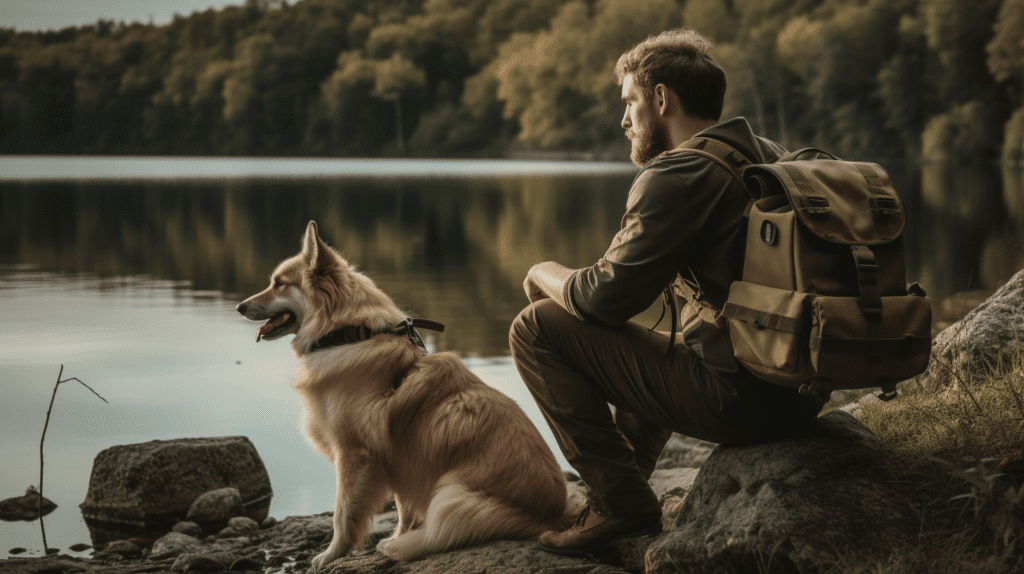
Understanding and Developing Preparedness Plans
Risk Assessment and Management
Risk assessment and management might not be the most exciting part of preparedness, but believe me, it’s the foundation on which all else stands.
It may sound a bit technical, but really, risk assessment and management is about getting to know your enemy — the risks you’re likely to face.
Think about your geographical location. Are you prone to earthquakes or hurricanes? Or maybe wildfires? Then there’s your personal situation. Do you live alone or have a large family? Any elderly folks or people with disabilities to care for? Pets, perhaps?
Next, consider the less obvious risks. Could you be affected by a power outage or a water supply disruption? What about a personal medical emergency or a job loss? Are cyber threats a concern?
Once you’ve identified the risks, it’s time to measure them. And yes, it’s a bit of a juggling act. You’re looking at the likelihood of a risk occurring versus its potential impact. A bit like juggling flaming torches — it’s all about managing not to get burnt!
Now you’ve got a clear picture of your risk landscape. Time to plan your defenses.
This could range from securing your home against hurricanes, setting up an emergency fund for financial crises, or getting that long-overdue health check-up.
Developing Personal Preparedness Plans
A well-designed personal preparedness plan is like a roadmap guiding you through any unforeseen event. So let’s begin your journey toward achieving that robust readiness.
Needs Assessment: A personal preparedness plan begins with a clear assessment of your needs. What are your daily requirements in terms of food, medication, or special needs? Understanding your unique needs will help tailor a plan that’s just right for you.
Potential Risks: What are the most likely emergencies you might face? These could be linked to your geographical location (like hurricanes or earthquakes), your health, or your lifestyle. Don’t forget to factor in the unpredictables of life, too, like financial emergencies.
Devise Strategies To Address The Risks: This could involve building up a savings buffer, planning an evacuation route, or learning new skills like first aid or cooking. Always have a backup plan — flexibility is crucial in times of crisis.
Communication: Define your key contacts in times of crisis, and ensure they are aware of and understand their role. Plan how you will receive emergency alerts and warnings.
Document Your Plan: Write it down and keep it in an accessible place. Remember, a plan is only as good as its execution, so make it clear and easy to follow.
Creating a personal preparedness plan is essentially about knowing yourself and your environment, then making practical decisions based on this knowledge.

Creating Household Preparedness Plans
A household preparedness plan serves as your family’s tactical guide when crises arise. It sketches out the framework for your family’s reactions and recovery strategies during emergencies.
Now let’s jump into the exciting task of designing this master strategy for your household.
First, gather everyone for a family meeting. Everyone’s input is valuable. Kids can often surprise you with their innovative ideas, and they’ll feel more invested in a plan they helped create.
Then review the risks you’ve identified earlier, and brainstorm about what actions to take for each of them. For instance, where would you go during a fire, or how to stay safe during a hurricane? Discussing different scenarios will help your family feel more comfortable when facing them.
Next, assign roles and responsibilities. Who grabs the emergency kit? Who handles first aid? Who ensures all family members are accounted for? Clear roles can prevent chaos and save precious time during emergencies.
Don’t forget to discuss communication plans. How will you stay in touch if cell towers are down? What’s the plan if family members are separated? Identifying a local and an out-of-town contact everyone can call, or selecting a common meeting place can solve these issues.
Lastly, plan for special needs. Does anyone take medication that should be in your emergency kit? Do you have pets to consider? Is there an elderly person who may need special assistance? Addressing these beforehand can prevent many headaches later.
Once your plan is ready, practice it. Run drills. Make adjustments as necessary. The more you practice, the more it becomes second nature.
Every strand of preparation you weave in strengthens the net, making your household more resilient in facing whatever comes your way.
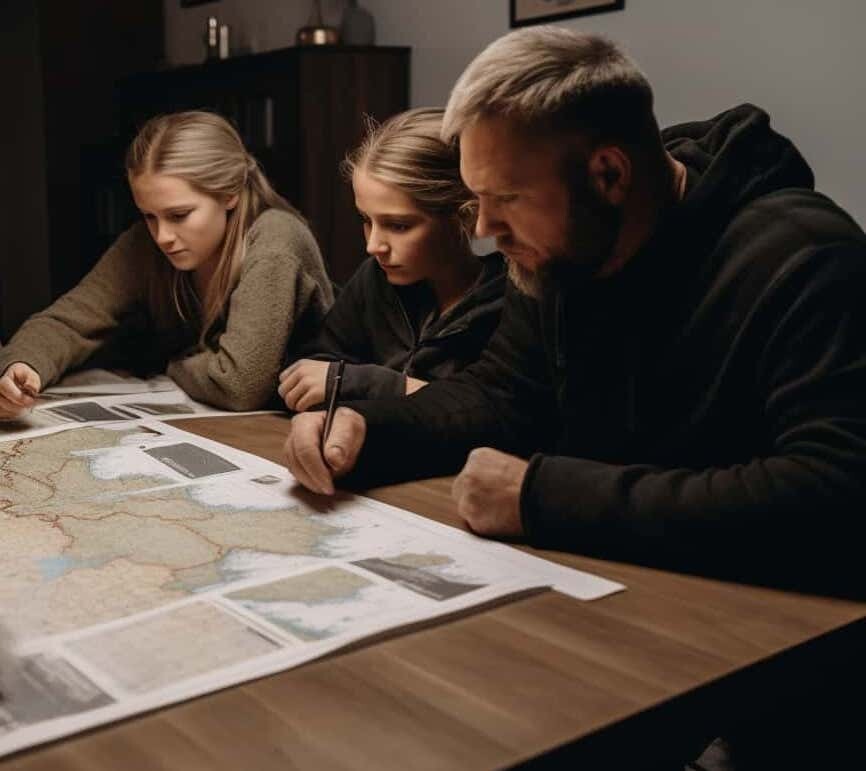
Building Disaster Specific Preparedness Plans
Each disaster is a unique beast, with its peculiar challenges and demands. So, a “one-size-fits-all” approach might not cut it.
For each potential disaster, your plan should outline: how to stay informed (where to get accurate information), how to react (what steps to take), and how to recover (what resources can aid in recovery).
Let’s say you live in a hurricane-prone area. Your plan might include tuning into a trusted weather station for updates, evacuating when advised by local authorities, and having a list of local recovery resources such as shelters or aid agencies.
A wildfire preparedness plan might involve subscribing to local fire alerts, creating a defensible space around your house, and having evacuation routes and backup routes mapped out.
If an earthquake is a likely threat, your plan could encompass participating in the “Great ShakeOut” drills, knowing how to “Drop, Cover, and Hold On,” and having a plan to reconnect with family members after the quake.
For pandemics, it’s about staying informed through credible health organizations, knowing preventive measures, understanding when and how to self-isolate, and having a list of local medical facilities and hotlines.
Your plan should also account for the aftermath. Disasters often leave a trail of challenges in their wake — power outages, limited mobility, communication breakdowns, psychological stress, etc. Being ready to tackle these can smooth your recovery journey.
It’s vital to involve all family members in these plans and run regular drills. Familiarity reduces fear and can lead to more effective response in real situations.
Creating disaster-specific plans is about being reasonably prepared, adaptable, and resilient. And each plan you create strengthens your overall preparedness, like adding more arrows to your quiver, ensuring you’re not caught off-guard when disaster strikes.

Implementing and Maintaining Preparedness Plans
Practice and Drills
There’s an old saying that goes, “Practice makes perfect.” And in the world of preparedness, this is no exception.
It’s not enough to just have plans; it’s crucial to practice them, to transform them from theory to muscle memory.
What if you found yourself in pitch darkness. Could you navigate your way around safely? Or picture having to evacuate your home within minutes. Would you be able to gather all necessary items swiftly? The value of practice and drills is it lets you answer these questions confidently.
Start with your home evacuation plan. Conduct regular drills where all family members participate. Experiment with different scenarios — a fire breakout, an intruder, a natural disaster. Test different exit routes and rendezvous points. Remember, the goal is to ensure everyone knows what to do and where to go, even in the heat of the moment.
Practice your “Shelter in Place” plan. Can you efficiently seal off a room against potential contaminants? Can everyone in the family locate and use emergency supplies?
Know how to use your emergency equipment. Can you start a fire with your survival lighter? Do you know how to assemble and use your portable shelter? Are you confident in your first-aid skills?
Join community drills if available. Participate in the “Great ShakeOut” earthquake drills, “Fire Safety Week” activities, or flood evacuation drills organized by your local authorities. They provide invaluable hands-on experience and give you a sense of how your community operates in crisis scenarios.
Make these drills a family tradition. Perhaps every change of season or at the start of the school year. This regularity not only engrains the plans but also allows for updates and improvements.
Remember, in a crisis, your actions may need to be instinctual, and instincts are honed through practice. So, rehearse your plans, know your tools, perform those drills, and when disaster comes knocking, you’ll be ready to answer.
Continuous Evaluation and Update of Plans
The world around us doesn’t stop changing, and neither should our preparedness plans. As we learn, grow, and evolve, our strategies must keep pace. Here’s why continuous evaluation and updating of your plans is crucial.
Think about your personal preparedness. Perhaps you’ve increased your physical fitness levels or achieved financial stability.
Maybe you’ve made significant strides in your emotional resilience. These achievements should reflect in your plans. As you level up in life, so should your readiness strategy.
Same goes for household preparedness. Have you moved to a new house? Added a pet to your family? Or maybe your children have grown older, with different needs and capabilities. All these changes warrant updates in your emergency plans and kits.
Similarly, community preparedness is not a one-and-done task. New neighbors might join your community, new facilities might be built, or perhaps existing emergency plans have been updated.
Staying in sync with these developments ensures that your community and you can support each other effectively during crises.
Disaster preparedness, too, isn’t immune to changes. New threats might emerge, or old ones might evolve. Climate patterns, technological advancements, geopolitical events –- all these factors can alter the landscape of potential hazards.
And let’s not forget the ever-evolving digital world. With increasing digitization, the importance of cyber resilience cannot be overstated. As technology and cyber threats evolve, so should your digital preparedness.
So, how do you keep your plans updated? Regular reviews are key.
- Set reminders to review and refresh your plans, say, every six months.
- Attend training sessions, webinars, and workshops to stay abreast of latest best practices.
- Actively seek feedback from family members and community, and be open to making changes.
Remember, preparedness is not a static state; it’s a dynamic process. It’s about being responsive to change, flexible in the face of new information, and ready to adapt.
It’s also about ensuring that your preparedness strategies are living, breathing documents that evolve with you, always keeping you one step ahead.
Education And Training
Education and training are invaluable tools that can equip you with skills, insights, and competencies necessary to navigate crises effectively.
Education can start right at home. Teach your family about the potential risks associated with your area, be it natural disasters, technological hazards, or health emergencies.
Inform them about the steps they can take to mitigate these risks. Remember, an informed family is a prepared family.
On the personal front, consider taking first-aid courses, survival skills workshops, or financial literacy classes. Knowledge in these areas can enhance your personal preparedness manifold.
CPR, for example, is a life-saving skill. And understanding your finances can help you plan for emergencies better.
As a part of a community, you could organize or participate in training programs that cover emergency response skills, communication protocols, or resource management strategies.
Sharing knowledge and learning collectively can greatly bolster community preparedness.
Also, stay informed about the types of disasters that could impact your area. Understand their warning signs, potential impacts, and recommended safety measures.
Digital preparedness is another area where education plays a vital role. Understand the basics of cybersecurity, learn to identify potential threats, and educate yourself on safe online practices. In this digital age, being cyber-literate is an essential part of preparedness.
Training is equally important. Drills, simulations, and hands-on exercises can help translate theoretical knowledge into practical skills. It gives you the opportunity to test your plans, identify gaps, and improve upon them.
So, embrace the journey of learning. Attend workshops, join webinars, read books, or engage with online communities.
Knowledge and skills, once gained, stay with you forever, becoming your trusted allies in the face of crisis. And the more you know, the better prepared you’ll be.
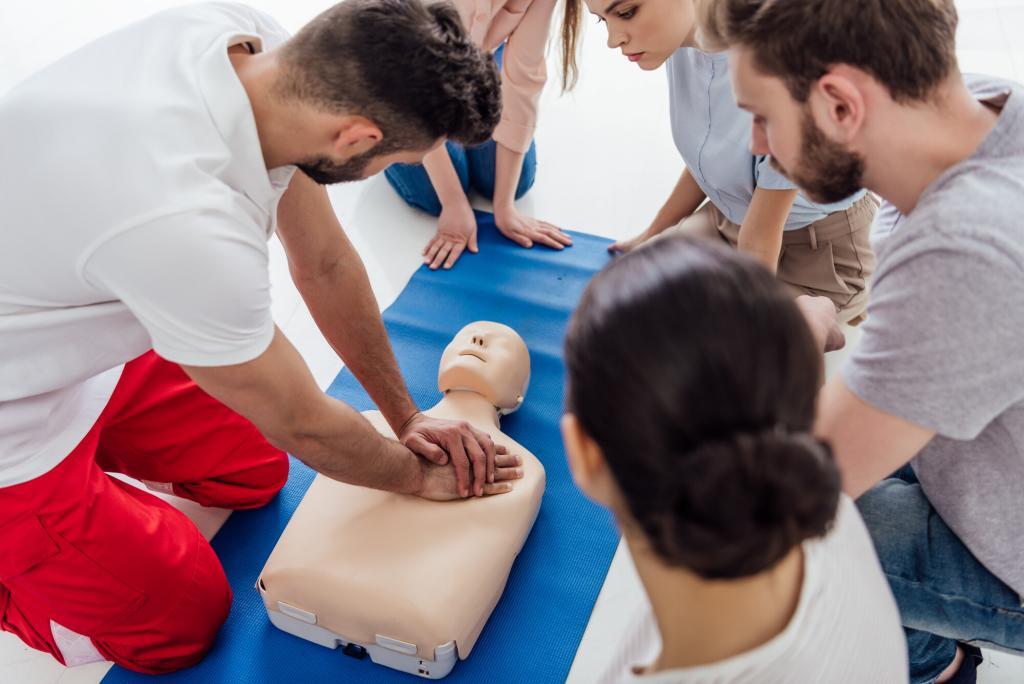
Preparedness Checklists and Templates
Let’s wrap up with a bit of a gift to you: tried-and-true preparedness checklists and templates. These resources can make your preparedness journey a tad bit easier, more structured, and a whole lot more efficient. So, let’s dive in.
1. FEMA Emergency Supply List: This is a comprehensive list that covers all the basics you would need in an emergency kit. It includes everything from water, food, and first aid supplies, to important family documents and cash.
2. Red Cross Disaster Preparedness Checklist:The Red Cross provides a simple yet effective checklist that covers both supplies and planning. It even includes suggestions for caring for your pets during a disaster.
3. CDC’s Emergency Action Plan Template: This easy-to-use template can help you chalk out your family’s emergency plan, taking into consideration important aspects like communication, evacuation, and emergency contacts.
4. Ready.gov’s Preparedness Planning for Your Business: For those running a business, this resource offers a step-by-step approach to creating a comprehensive business continuity plan.
5. The Department of Homeland Security’s Active Shooter Preparedness Resources: An unfortunate reality of our times, this resource provides clear guidance on how to respond to an active shooter scenario.
6. The National Fire Protection Association’s Home Fire Escape Plan: This template can guide you through creating a detailed fire escape plan for your home, which is a must-have for all households.
These checklists and templates don’t just provide a roadmap for your preparedness journey, but also ensure you don’t miss out on any crucial steps. They’re practical, easy to follow, and can be customized to suit your unique needs.
Tools And Technologies For Preparedness
In personal preparedness, tech can play a significant role. Fitness trackers can help monitor your health, while apps can assist in managing stress or mental health.
Budgeting and investment tools can aid in financial planning. For any preparedness aspect, there’s likely a tech tool that can support you.
When it comes to household preparedness, home security systems, smoke detectors, and carbon monoxide alarms can enhance the safety of your living space.
Smart utilities can help monitor and manage resources. Weather apps can provide real-time updates about potential threats. Tech can make your home a safer, more resilient fortress.
Community preparedness can also be aided by technology. Communication tools can enable seamless information sharing during emergencies.
Digital platforms can foster community engagement and collaboration. Mapping tools can provide vital data about local resources, hazard zones, and evacuation routes.
Disaster preparedness, in particular, has seen some incredible tech advancements. Early warning systems can alert you about incoming natural disasters.
Emergency response apps can provide real-time information and safety tips. Drones and AI can assist in search and rescue operations post-disaster.
In the realm of digital preparedness, cybersecurity tools are essential. Firewalls, antivirus software, and VPNs can protect your digital assets.
Data backup solutions can safeguard against data loss. Encryption tools can ensure secure communication.
Lastly, don’t forget about preparedness tools for different groups. Apps and devices tailored for children, the elderly, individuals with disabilities, or pet owners can address their unique needs and capabilities.
The key is to explore, understand, and adopt the tools and technologies that best suit your needs. But remember, tech should supplement, not replace, your preparedness efforts.
After all, technology is just a tool. It’s how you use it that truly makes the difference in your preparedness journey.

Sustainable Practices in Prepping
Now let’s delve into how we can transition towards sustainable practices in prepping. By integrating sustainability into our readiness efforts, we can ensure our survival while also safeguarding the planet’s future. So, how do we achieve this?
Let’s start with our food and water supplies. Consider moving away from single-use plastic bottles and packaged foods. Opt for reusable water containers and store food in bulk to minimize packaging waste. Additionally, sourcing locally produced food reduces carbon emissions associated with transport.
When it comes to energy use, strive for efficiency. Insulate homes properly to reduce heating and cooling needs. Maintain and upgrade home appliances to ensure their efficiency. Opt for energy-saving lighting, and consider hand-cranked or solar-powered alternatives for emergency equipment.
Use reusable supplies wherever possible in emergency kits. Promote waste segregation in temporary shelters.
In your community, foster a culture of environmental consciousness. Promote sustainability in community plans and activities. Encourage local sourcing and waste management.
Adopting sustainable practices in preparedness does require effort, but it’s an investment that pays off in long-term resilience and environmental conservation.

The Role of Renewable Energy in Preparedness
The journey towards sustainable preparedness is incomplete without mentioning the role of renewable energy. When we talk about energy in the context of readiness, it often brings to mind backup generators running on fossil fuels.
But we’re in an era where we can look beyond this traditional approach, towards more sustainable and efficient sources of energy.
Renewable energy sources like solar, wind, and hydro power offer an eco-friendly alternative that also proves more reliable and resilient in many emergency situations. Let’s unpack this a little more.
Solar power is one of the most accessible forms of renewable energy for individual preppers. Solar panels can provide electricity for your home, and portable solar chargers can power phones, radios, and other vital equipment during emergencies. Imagine the independence and security of knowing that as long as the sun rises, you’ll have power.
Wind and hydro power might require more specialized installations and are dependent on your geographical location, but they can also contribute to a resilient and sustainable energy plan.
Another aspect to consider is the storage of this renewable energy. Advancements in battery technology have made it possible to store solar and wind energy for use when the sun isn’t shining or the wind isn’t blowing.
But this isn’t just about the practicalities of power generation. Integrating renewable energy into your preparedness plans sends a strong message about your commitment to sustainable living.
Remember, every bit of renewable energy used is a step away from fossil fuels and a step towards a greener, more sustainable future. And isn’t that the kind of future we want to be prepared for?
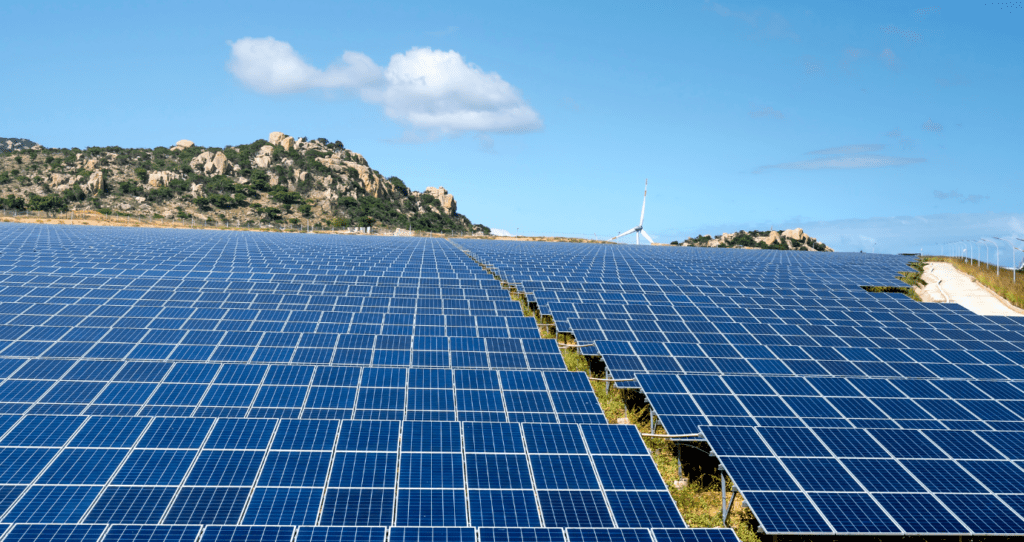
Conclusion
The Role of Preparedness in the 21st Century
In the rapidly changing landscape of the 21st century, preparedness has taken center stage. It’s no longer a fringe movement, but a mainstream necessity.
From increasing natural disasters and climate change-induced crises to technological hazards and global pandemics, the need for preparedness is more apparent and urgent than ever.
Our world today is deeply interconnected. Events on one side of the globe can have a ripple effect, impacting societies far and wide. This interconnectedness, while beneficial in many ways, also amplifies risks.
We’re only as strong as our weakest link, and preparedness ensures that we’re shoring up these weak links.
Moreover, the digital revolution has changed the face of preparedness.
Cybersecurity, digital asset management, and maintaining an online presence are now integral parts of being prepared. We’re not just securing our physical world, but also our virtual one.
Despite these challenges, the 21st century also brings unparalleled resources and opportunities for preparedness.
Advanced technologies, increased accessibility of information, online communities, and evolving legislation have all allowed individuals and communities to be better prepared.
In this dynamic century, preparedness isn’t just an advantage—it’s a necessity. It’s about adapting to change, learning to bounce back, and moving forward, no matter what the future holds.

Resources
Books and Publications on Preparedness
Looking for more information on the world of preparedness? Lucky for you, an abundance of resources awaits! From books to online forums, and from practical tools to scientific journals, there’s something for everyone.
Books offer a wealth of information, knowledge, and practical wisdom. A favorite in the prepper community is The Survival Medicine Handbook by Joseph and Amy Alton, a practical guide for those who want to be medically prepared when help is not on the way.
Want to learn how to thrive after severe, long-term disasters? Prepper’s Long-Term Survival Guide by Jim Cobb, is your go-to resource.
If it’s financial preparedness you’re interested in, don’t miss Your Money or Your Life by Vicki Robin. This book could change your perspective on money and help you live a life of financial independence.
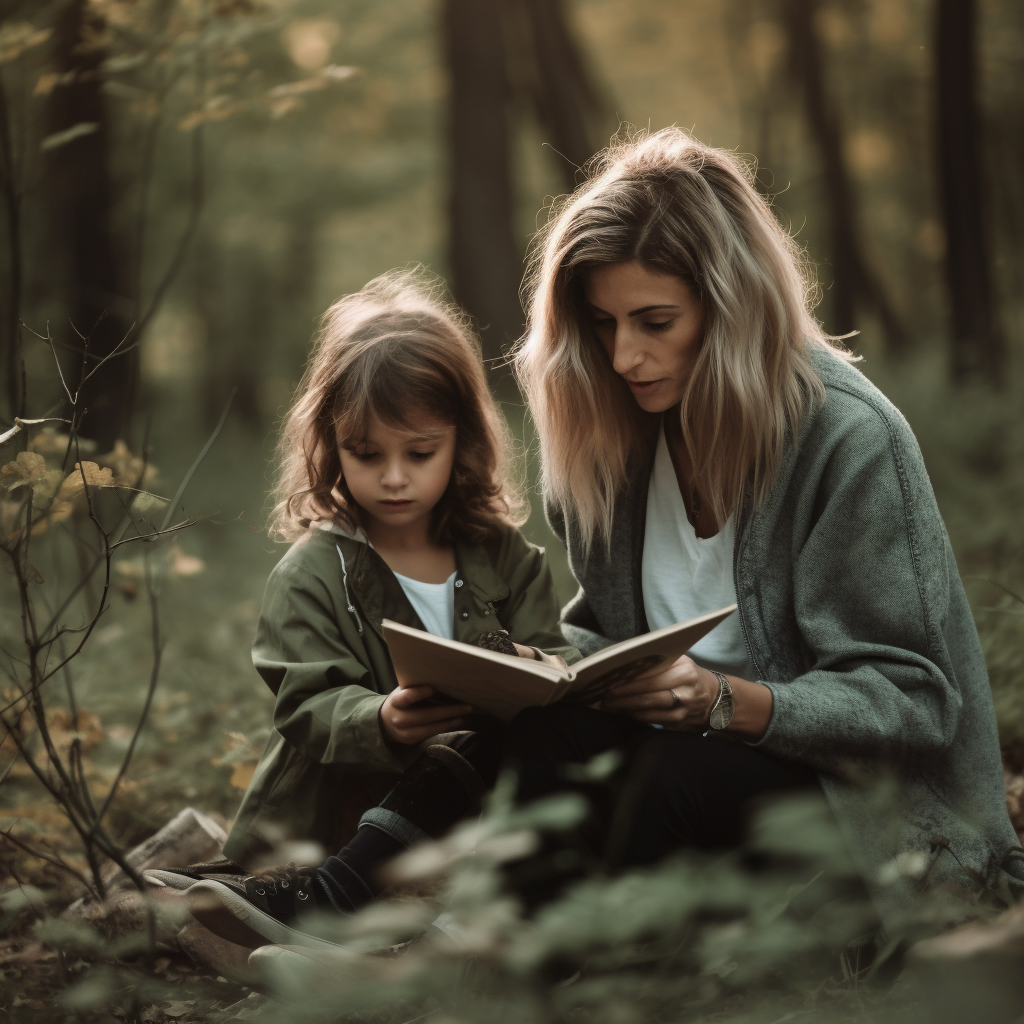
Online Resources and Communities
Online resources and communities can be a goldmine of information, inspiration, and support.
In the age of the internet, knowledge is at your fingertips. Websites like Ready provide comprehensive guides on various aspects of preparedness. From natural disasters to pandemics to power outages, it’s got you covered.
The CDC also offers resources on public health emergencies, while the American Red Cross provides guides on disaster preparedness for diverse hazards.
Podcasts can be a great source of information too. Check out The Survival Podcast for insights and advice from experts in the field.
There are also online forums and social media platforms provide platforms where preppers can connect, share experiences, and learn from each other. Websites, subreddits and forums are full of discussions, advice, and resources shared by a global community of preppers.
You can also join Facebook groups that can also be valuable platforms for discussion and connection.
Then there’s YouTube — a treasure trove of tutorials, product reviews, and educational content.
Online learning platforms like Coursera and Udemy also offer courses on emergency preparedness and related topics, many of them free or affordable.
Whether you’re just starting out or an experienced prepper, these online resources and communities can help you navigate your journey, learn new skills, and connect with like-minded individuals.
Training and Education Opportunities
Preparedness is not just about gathering information and resources, it’s also about applying that knowledge through practice and training.
Here are some valuable hands-on courses that you can consider to enhance your preparedness skills:
First Aid, CPR, and AED Training: Red Cross offers comprehensive courses nationwide. These skills are essential, as they equip you to handle medical emergencies that may arise during a crisis.
Survival Skills Courses: Many organizations offer wilderness survival courses where you can learn skills like building a shelter, foraging for food, navigating without GPS, and more. Check out the National Outdoor Leadership School or REI’s Outdoor School.
Ham Radio Classes: In major disasters, traditional communication networks may fail, but ham radio often remains reliable. The American Radio Relay League offers courses to get you started with this essential communication tool.
Self-Defense Classes: Learning how to protect yourself and your loved ones is an integral part of preparedness. Local martial arts schools, community centers, and YMCAs often offer these classes. Krav Maga, for instance, focuses on practical self-defense in real-world situations.
Emergency Response Training: Programs like FEMA’s Community Emergency Response Team (CERT) train volunteers in basic disaster response skills.
Firearm Safety Courses: If you plan to include firearms in your preparedness plan, safety training is a must. The National Rifle Association offers classes across the country.
Gardening and Food Preservation Workshops: Growing and preserving your own food is a key skill for long-term sustainability. Check out your local agricultural extension office for classes.
Remember, while online resources and books provide a wealth of information, there’s no substitute for hands-on learning. So, roll up your sleeves, get out there, and start training!
And remember, these are starting points. Feel free to add, adapt, and make these resources work for you.

Final Thoughts
One vital takeaway to remember: preparedness isn’t about gazing into a crystal ball or dwelling in a state of anxiety.
It’s about taking control of your life, your safety, and your peace of mind. It’s having the assurance that no matter the curveballs life tosses at you, you’re equipped and primed to tackle them straight on.
Preparedness isn’t a one-off project; it’s an integral part of life—a dynamic cycle of learning, adapting, and enhancing. It’s the small, everyday actions that accumulate into substantial outcomes.
In a realm of unpredictability, preparedness equates to resilience. It signifies thriving, not just surviving, amidst adversity, converting obstacles into prospects, and bouncing back stronger after a fall.
After all, preparedness is personal, and the best plan is the one that fits your life like a glove. So, go ahead and start planning your prepared future.

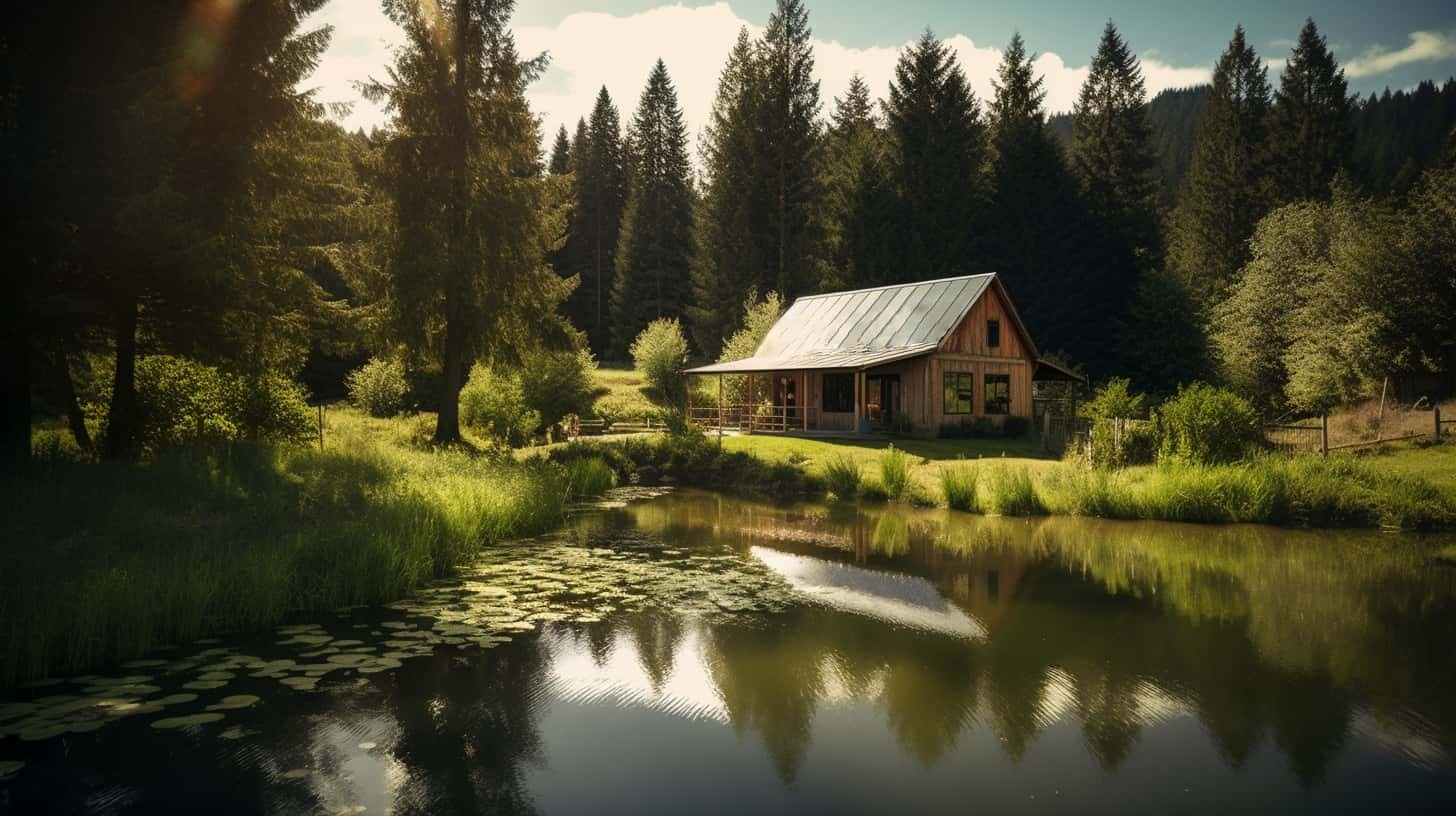
0 Comments